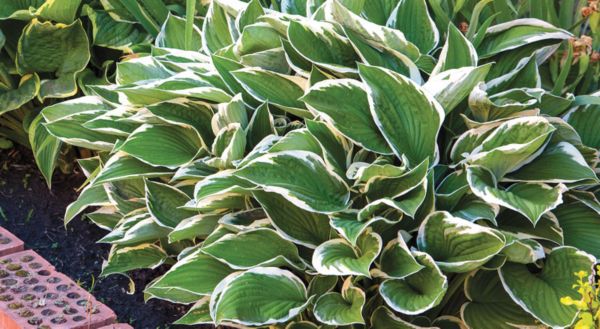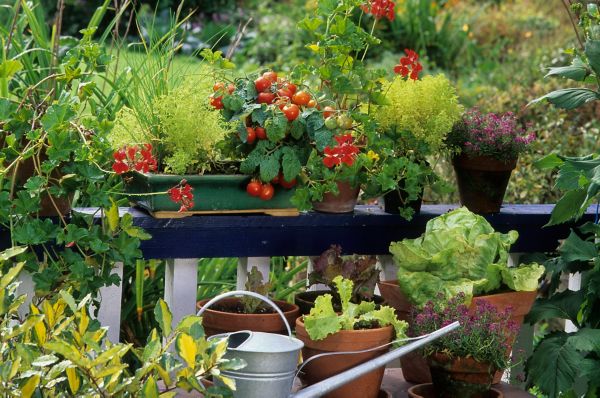How to Grow Citrus Trees
Authored by Leah Chester-Davis
Citrus includes a wide variety of options. Among them: lemons, limes, oranges, grapefruits, tangerines, mandarins, tangelos, pomelos, satsumas, kumquats, calamondins. Availability of different types and varieties may vary, depending on region, due to certain quarantine requirements due to diseases.
Growing citrus in the home garden can seem a bit magical. Many equate these plants to tropical climates or paradise. The genus Citrus is native to Asia, Melanesia, and Australia. While citrus in the United States is primarily grown commercially in Florida, California, Arizona, and Texas, it’s possible to enjoy these wonderful plants even if you live in other regions. For people living in regions of the country where winter temperatures dip below freezing, planting citrus in a container is the way to enjoy this plant so that it can be moved indoors to a sunny spot. It makes a lovely houseplant.
Citrus trees that are grown in warm climates, especially those grown outdoors year-round, can reach small tree sizes, about 30 feet tall. Dwarf types typically grow 3 to 5 feet tall and are ideal for containers. The foliage of citrus is glossy, dark green, and elongated. It can be quite fragrant, especially when crushed. Some cultivars have variegated leaves. Citrus plants produce clusters of fragrant, white flowers, and most bloom in the spring though a few – lemons, limes, kumquats – may flower periodically year-round. The fruit is juicy and fragrant, and ranges from sweet to acidic. The fruit's flesh varies depending on the type and may be yellow, green, orange, or red. Fruits vary from 2 to 5 inches in diameter.
About citrus
| Botanical name: | Citrus spp. |
| Common name: | Citrus, such as orange, lemon, lime, grapefruit, tangerine, etc. |
| Plant type: | Small evergreen tree; dwarf varieties can be grown as houseplants |
| Size: | 5 to 6 feet (dwarf varieties) to 12 to 30 feet high and 8 to 25 feet wide |
| Sun exposure: | Full sun |
| Soil type: | Sandy loam soil with good drainage |
| Soil pH: | 5.5 to 6.5 |
| Hardiness zones: | 9 to 11; in colder zones, a combination of outdoors/indoors |
| Average first frost: | Varies by region |
| Average last frost: | Varies by region |
| Container friendly: | Yes, dwarf cultivatars |
| Beginner friendly: | Yes |
Growing
Citrus grows best in evenly moist, sandy loam soil that is well-drained and slightly acidic, 5.5 to 6.5 pH. Citrus doesn’t do well in heavy, saturated soils. For information on pH and any necessary amendments, have your soil tested. Most county Extension offices supply sample kits for free or a nominal fee. If planting in containers, use a potting mix labeled for cactus, palm, and citrus.
Cite trees where they receive lots of sun, at least 8 hours of sunlight daily. Optimum temperatures are between 65- and 85-degrees F, though they can tolerate cooler temperatures, depending on the type. Temperatures below 25 degrees F for an extended period can be quite damaging.
Indoors, situate them near a south-facing window that receives lots of bright, natural light. If needed, supplement the light with fluorescent lights or grow lights. If growing indoors in a container, move the tree outdoors after danger of frost has passed. Give plants time to acclimate to outdoor conditions several days before placing in full sunlight. Bring back indoors in the fall before the first frost.
Late winter or early spring, after the danger of freezing temperatures has passed, is a good time to plant the trees outdoors. In colder climates this may be as late as mid-April. A spot where there is some protection, such as on the south side of your house, is desirable.
Cite trees where they receive lots of sun, at least 8 hours of sunlight daily.
Planting
Most citrus trees bought for the home landscape are typically propagated by grafting onto rootstocks and will be grown in containers or balled-and-burlapped. Select disease-free trees and avoid those that are root-bound. Citrus can be grown from seeds, but they aren’t true to type and may take longer to produce.
When planting in the ground, work the soil until it is loose and friable in a 4-foot diameter area. If drainage is a problem, plant in raised beds. As the tree grows, widen the weed-free diameter to reduce any competition from weeds and grass. If growing trees in prepared landscape beds or in an area where mulch is used, keep the mulch at least a foot away from the tree trunk as it can cause foot rot disease.
To plant the tree, dig a hole that is slightly larger than the root ball. Plant the tree so that the top of the root ball is level with the soil surface and not sunk into the hole. This is critical to avoid problems with foot rot disease. Fill the hole with about half full soil. Add water and then tamp down the soil. Add more soil until the hole is filled and then water again. After the water has drained, pack the soil firmly around the plant. Add more soil, if needed.
For the most effective watering method, Texas A&M Extension recommends building a watering ring atop the ground around the tree. Pile soil about 5 to 6 inches high and 6 to 8 inches thick. Make it slightly wider than the planting hole. Fill the water basin with water and allow it to soak in. If needed, add soil to the holes that appear after the water has soaked in. Water newly planted trees 2 to 3 times the first week, and 1 to 2 times per week for the next few weeks, depending on rainfall and time of year. After that, apply water when the soil begins to dry an inch or so down. Fill the water ring each time and allow the water to soak in. Florida Extension recommends about 8 to 10 gallons of water at each watering. After several months, the water ring will wear down. It takes about 4 to 6 months for the tree to become established. After that, water as needed.
As the tree grows, prune away any suckers or tree shoots from its base. Otherwise, Florida Extension shares that citrus trees do not require pruning of the canopy for production or tree health, except when substantial injury occurs following disease or freeze damage. If pruning is needed, remove a minimal amount to avoid interfering with crop production.
When planting in containers, select a container that is 2 inches larger than its current container and is lightweight so that it can easily be moved indoors and outdoors when needed. Make sure the container has drainage holes. Use a well-drained potting mix; native soil is too heavy and may not drain well in containers.
Plants in containers outside typically need to be watered more often than those grown in the ground.
Fertilizing
- Do not add fertilizer in the planting hole when planting as it can damage the roots. When growth begins in the spring, use a complete fertilizer such as 10-10-10 or an organic choice such as fish emulsion. Follow label directions. Fertilize about every 6 weeks (about 1 and a half months) during the growing season from early spring to early fall, depending on the fertilizer used. Apply fertilizer to the ground about a foot in diameter around the tree. As the tree grows, Georgia Extension guidelines are to fertilize twice the diameter of the tree canopy. Do not allow fertilizer to touch the tree. Water in the fertilizer after each application.
- For citrus in containers, look for a fertilizer for acid-loving plants or one labeled citrus fertilizer. Organic slow-release or fish emulsion are options. Follow label directions for amounts and frequency to apply. Typically, citrus will need to be fertilized at least three times during the growing season, from April through August.
Controlling Pests, Diseases, and Other Problems
- Citrus can have some problems with scale, mites, aphids, whiteflies, and mealybugs but rarely to the level warranting treatment. The most effective way to reduce problems is to ensure good cultural conditions such as healthy soil and proper lighting, watering, and feeding.
- Before bringing plants indoors for the winter, apply horticultural oil or insecticidal soap labeled for houseplants. This can help reduce problems with pests. For indoor plants, it may help to periodically wash leaves, paying attention to both the tops and undersides.
- Root rot can affect plants in poorly drained growing medium. To reduce chances of problems, grow in a quality potting medium in containers. For plants outside, grow in a sandy loam. For fungal disease problems, copper fungicides can be used. Follow label directions. If pest and disease problems become troublesome, contact your county Extension office for information on licensed pesticide applicators.
Harvesting and Storing
It typically takes about three years for budded trees to produce fruit, and even longer for seedlings. As the tree size increases, so does production.
Harvest fruit as needed. Citrus will only ripen on the tree.
Storing
Citrus will keep at room temperature for a couple of days. To keep fruits at their best, store them in the refrigerator, where they will keep for 3 to 6 weeks (about 1 and a half months).
Fruit will only ripen on the tree. Harvest as needed.
Expert Tips
- Cultivars are typically labeled early, midseason, or late, depending on when their fruit matures. Keep this in mind when buying plants, and whether you wish to have a fresh supply of fruit over several months.
- The cold hardiness of citrus varies by type. If growing outdoors year-round, check with your county Extension office or garden center for types suited for your area. For example, kumquats, satsumas, and calamondins can typically withstand colder temperatures. Mandarins and tangerines are less cold hardy but a little more tolerant to cold than oranges and grapefruits. Lemons and limes are the most cold sensitive.
- Lemons are typically more vigorous growers than other citrus species. In the landscape, give them room to grow, about 15 or more feet away from other trees or structures. Give them and any other citrus trees room to grow without having to prune heavily, which reduces production levels.
Frequently asked questions
Do my citrus tree require cross pollination to set fruit?
Most citrus trees do not require cross pollination, so you only need one to produce fruit. Tangerines are the exception; two or more tangerine varieties are needed for proper pollination. Outdoors, trees are typically pollinated by insects. Indoor plants can be pollinated by gently brushing the blossoms with a small, soft paintbrush.





